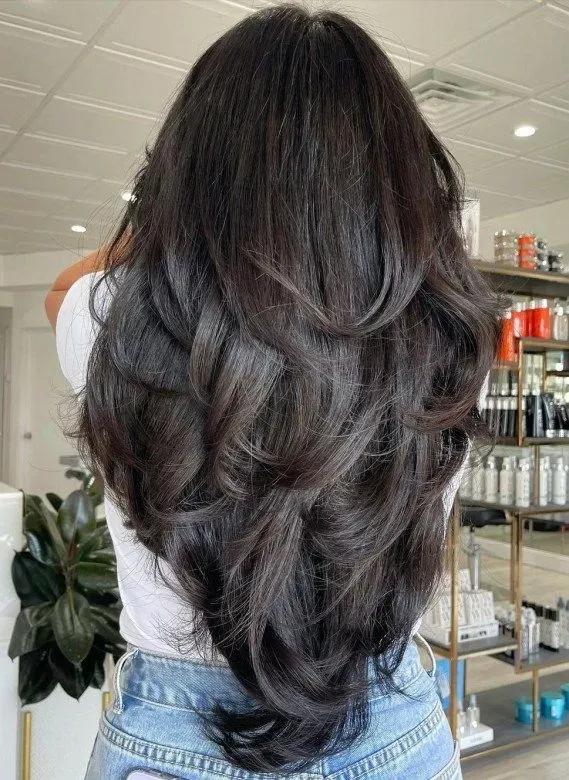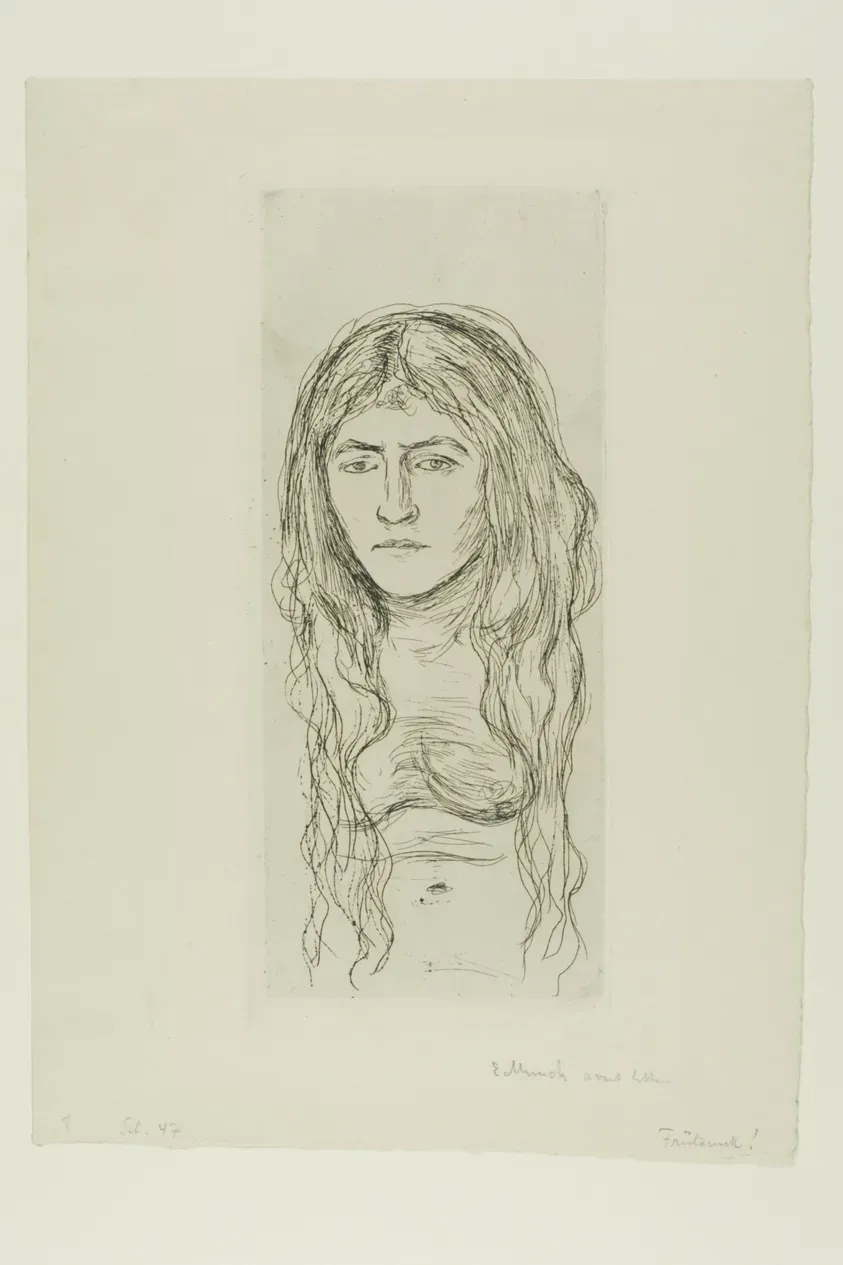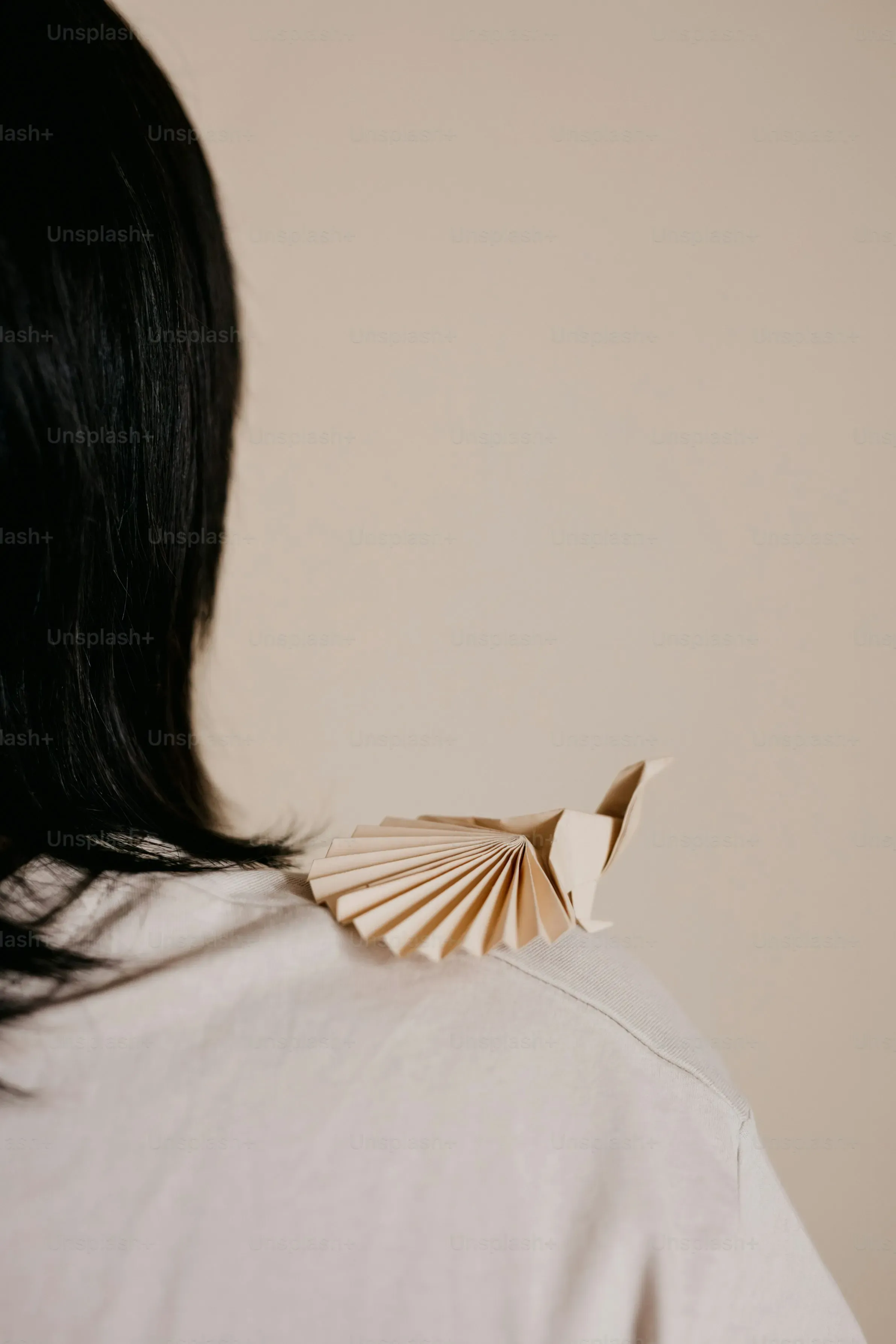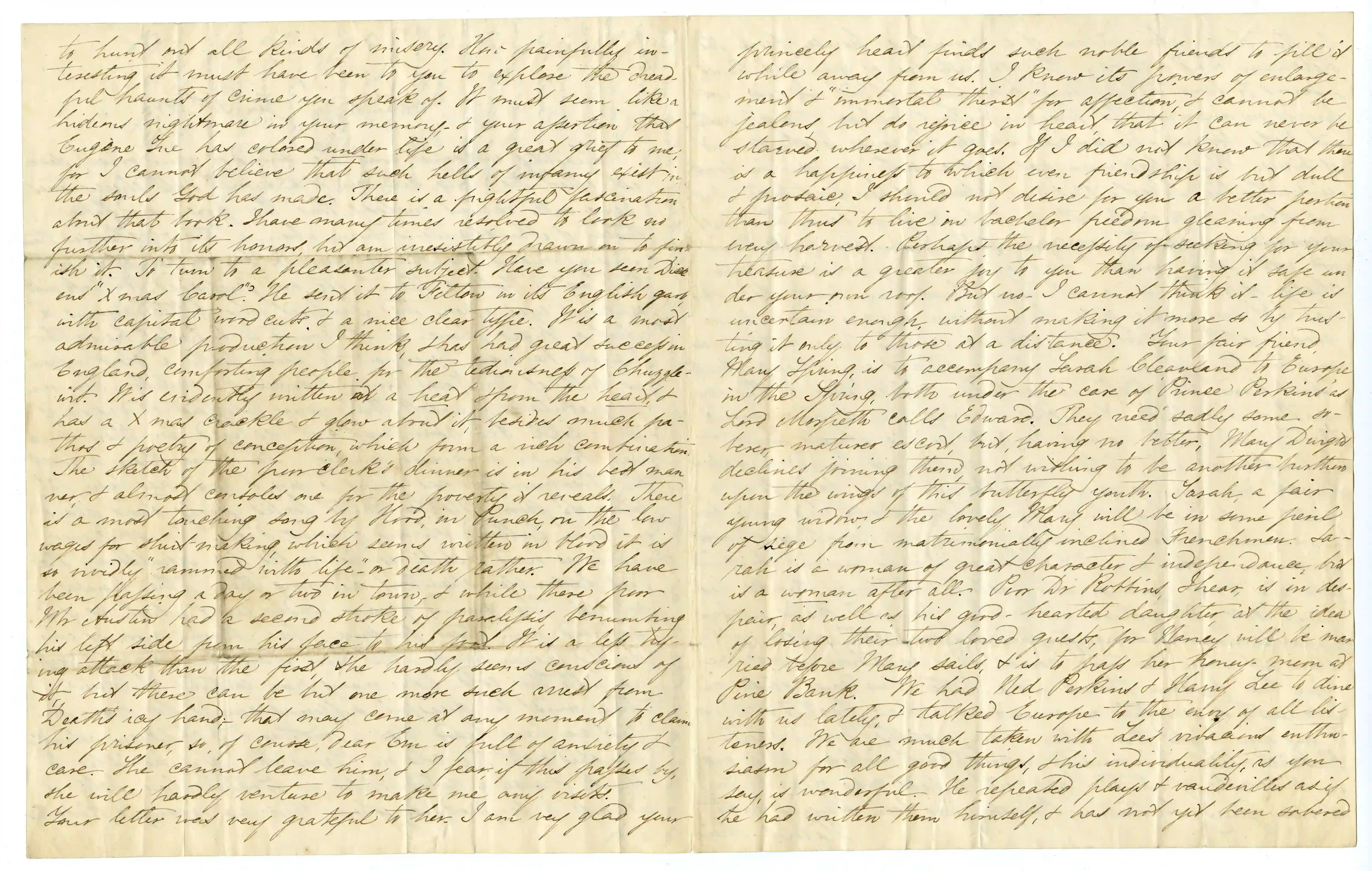Table of Contents
So, you've seen the videos, maybe scrolled through some photos, and the idea of abutterfly cut in long hairhas landed squarely on your radar. It promises volume, movement, and face-framing layers without sacrificing much length – a dream for those dedicated to growing out their mane. It looks effortless, like you just woke up with perfect, flowing locks.
Considering the Butterfly Cut for Long Hair: Is It Right for You?

Considering the Butterfly Cut for Long Hair: Is It Right for You?
The Promise of the Butterfly Cut for Long Hair
Everyone wants hair that moves, hair that has that effortless, windswept look without actually battling gale-force winds. Thebutterfly cut in long hairpopped onto the scene promising just that. The basic idea? Shorter layers around the face and crown blend into longer layers throughout the length, creating the illusion of significant volume and bounce. Think of it as strategically placed shorter pieces that lift the longer ones. It’s designed to give you noticeable face-framing pieces that feel like they could flutter, hence the name. It sounds great on paper, especially if your long hair tends to lie flat or feels heavy. You get the appearance of layers and body without chopping off inches from your precious length.
Who's Usually a Good Candidate (and Why)?
Stylists often pitch the butterfly cut to folks with medium to thick hair density. Why? Because you need enough hair to create those distinct layers without making the rest look thin or sparse. Fine hair can sometimes look stringy or even thinner with this cut if not done precisely. The goal is volume and shape, not just random shorter bits. It's particularly appealing if you love wearing your hair up but want some pieces to fall out around your face, or if you blow-dry your hair often and want to enhance volume and movement. If you're someone who usually avoids layers because you don't want to lose length, the promise of keeping most of it while gaining shape makesconsidering the butterfly cut for long hairfeel like a clever compromise.
Consider Your Hair Type & Styling Habits:
- Density: Thick or medium hair generally supports the layers best.
- Texture: Works well on straight or wavy hair; can add shape to loose curls. Very tight curls might require a different layering approach.
- Styling Time: Requires some styling (blow-drying, curling) to see the full "butterfly" effect. Air-drying might not yield the desired volume.
- Face Shape: The face-framing layers can be tailored, but consider how prominent layers will look around your face.
Realistic Expectations Before Committing
Here’s where we pump the brakes slightly. While the concept is appealing, the execution matters, a lot. A bad butterfly cut can leave you with disconnected layers that look less like wings and more like unfortunate steps. The shorter layers around the face are key, but if they're too short or poorly blended, you might feel like you have a mini-mullet happening on top of your long hair. Your hair's natural texture and how it falls when dry are crucial factors. If your hair has a strong wave pattern, those shorter layers might spring up more than you expect. Talk specifics with your stylist. Show them photos, but also listen to their assessment of whether this cut truly suits *your* hair type and lifestyle. Don't just chase the trend without considering the practical reality of styling it every day.
When Your Butterfly Cut in Long Hair Goes Sideways: Dealing with Regret

When Your Butterfly Cut in Long Hair Goes Sideways: Dealing with Regret
That Sinking Feeling: Realizing Your Butterfly Cut Isn't Flying
You sit in the chair, the cape comes off, and you look in the mirror. Instead of bouncy, face-framing layers, you see... something else. Maybe the layers are too short, looking like awkward shelves rather than flowing wings. Perhaps they don't connect smoothly to the rest of your long hair, creating a weird disconnect. The volume you wanted turned into frizz, or the "effortless" look requires three different hot tools and half a can of hairspray. That initial excitement drains away, replaced by a cold knot of regret in your stomach. It’s a particularly sharp sting when you’ve spent months, or even years, carefully nurturing your length, only to have a trendy cut leave it looking... wrong. You might feel foolish for trying it, or frustrated with the stylist, but mostly, you just want your old hair back.
Why Does a Butterfly Cut Go Wrong on Long Hair?
Regretting abutterfly cut in long hairisn't uncommon, and it's rarely just bad luck. Often, it boils down to a mismatch between expectation and reality, or simply poor execution. Maybe your hair texture wasn't quite right for the style, and the layers just don't sit properly without intense styling. Sometimes, the stylist didn't understand the technique fully, or rushed the blending process, leaving those tell-tale choppy lines. Other times, you envisioned a subtle change, but the cut ended up being far more dramatic than you anticipated, especially around the face. It's a specific technique, and if the angles are off, or the layering isn't customized to your hair's growth pattern and density, the result can be less "ethereal butterfly" and more "terrifying moth."
Signs Your Butterfly Cut Might Be a Miss:
- Disconnected, shelf-like layers.
- Face-framing pieces that look like a separate, short haircut.
- Lack of blending between short and long sections.
- Hair looks thinner or stringy instead of voluminous.
- Requires excessive styling to look presentable.
- Doesn't suit your natural texture when air-dried.
- You feel like you have a mini-mullet on top.
Fixing or Growing Out a Tricky Butterfly Cut in Long Hair

Fixing or Growing Out a Tricky Butterfly Cut in Long Hair
so the butterfly cut didn't quite take flight. You're staring at something less than ideal, and the immediate impulse might be panic or reaching for the nearest pair of scissors yourself (please, don't). The good news is that a trickybutterfly cut in long hairisn't the end of the world, even if it feels like it right now. Your options generally fall into two camps: try to fix it with another cut, or commit to growing it out strategically. Neither is a magic bullet, and both require patience, perhaps a good hat collection, and a realistic view of the timeline. Getting a professional opinion from a stylist who understands corrective cutting or blending layers is usually the first, most sensible step before you do anything drastic. They can assess the damage and suggest a plan, whether that involves softening harsh lines, adding more layers to connect the disconnected ones, or simply shaping it for a more graceful grow-out.
Avoiding Butterfly Cut Woes: Tips Before You Snip

Avoiding Butterfly Cut Woes: Tips Before You Snip
Finding a Stylist Who Gets the Butterfly Cut
Alright, you're still considering thebutterfly cut in long hair, despite the potential pitfalls. Good. Awareness is key. The absolute most critical step before anyone comes near your head with shears is finding a stylist who actually understands this specific technique. This isn't just a standard layered cut; it requires a particular approach to blending shorter face-framing pieces into longer lengths. Don't just walk into any salon and ask for it. Do your homework. Look at their portfolio – do they have examples of similar cuts on long hair? Ask specific questions about their experience with this style. A good stylist will be able to tell you if it's even suitable for your hair type and texture, and they won't promise you the moon if your hair realistically won't cooperate. Think of it like finding a good doctor; you want someone who specializes in your particular ailment, not just a general practitioner guessing at a diagnosis.
Communication is Not Optional, It's Everything
You’ve found a potential stylist. Great. Now comes the talking part. And you need to talk *a lot* before the cutting starts. Bring pictures – not just one, but several from different angles and on hair types similar to yours. Be specific about what you like and, crucially, what you *don't* like in those photos. Explain your daily styling routine. Are you a wash-and-go person? Do you live for your blow dryer and round brush? This matters. If you air dry your hair and the stylist is used to styling this cut bone-dry with heat, you're setting yourself up for disappointment. Ask them to explain exactly where they plan to cut and why. Don't be afraid to ask questions, even if they seem simple. It's your hair. It's okay to be a little high-maintenance in the consultation phase to avoid being a lot miserable later.
Consultation Checklist:
- Bring multiple reference photos (front, side, back).
- Point out specific details you like/dislike in photos.
- Describe your natural hair texture and how you usually wear it.
- Explain your daily styling routine (time spent, products, tools).
- Ask the stylist if your hair type is suitable for the cut.
- Discuss where the shortest layers will fall and how they will be blended.
- Confirm the desired length of the longest layers.
- Don't feel pressured to proceed if you have doubts after the talk.
Understand What the Cut Actually Does
Before you commit to thebutterfly cut in long hair, make sure you truly understand the mechanics of it. It relies on creating shorter sections, primarily around the face and crown, that are then blended (ideally) into your longer lengths. This means you *are* losing some length, just in specific places. The volume and movement come from these shorter layers providing lift and shape, especially when styled. If your primary goal is simply blunt, heavy length with no layers whatsoever, this cut is not for you. If you're imagining a cut that looks perfect with zero effort, you might also be disappointed; most layered cuts, including this one, look best with some level of styling. Know what you're signing up for – it's not a magical transformation that happens on its own.
Final Thoughts on the Butterfly Cut and Long Hair
Ultimately, thebutterfly cut in long hairis a technique, not a magic spell. It can deliver beautiful results, adding life and shape to long lengths. It can also go wrong, leaving you with layers that feel disconnected or wispy ends that make you question your life choices. The key takeaway isn't to fear the scissors, but to approach any significant cut, especially one that promises dramatic layering, with clear communication, realistic expectations, and perhaps a healthy dose of skepticism about viral trends. If it works, great. If it doesn't, it's hair – it grows back. Slowly, perhaps awkwardly, but it does. Focus on good hair health and find a stylist who actually listens, and you'll navigate the layered landscape with far fewer regrets.